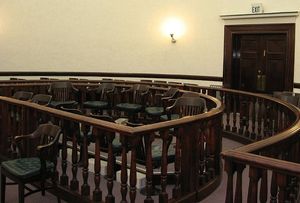Learning to brief cases effectively is one of the first skills a first year in any law school around the nation must learn– and learn quickly. The retention of first year law school reading assignments depends upon students’ ability to read, understand, and brief cases properly. First year law students around the nation spend class hours feeling tense, anxious, and stressed– and these feelings can easily be alleviated by a good case brief. So how does one effectively brief a case for law school*?
Facts
The first section on any law school brief should be the facts section. Pretty self-explanatory, in this section you should write the main and key facts of the case. You should write down facts in your brief that will help you remember what the case was about– so, ‘boy gets electrocuted by trolley wire’ may be all you need. If your Professor tends to ask detailed questions about the facts of the case, this section should be more detailed too.
Procedural History
Most cases that law students read are Appellate cases– hardly ever will first years read Trial court decisions– which means that most of the cases you read will have histories. In this section you will write what happened to the case in the lower courts– what was the trial court decision? What was the middle Appellate court say? Which party now appeals and why?
Issue
The issue section of a case is a very important part of your case brief because it tells you what exactly the question is that the court is now addressing/seeking to answer. Most issues will surround whether the lower courts abused their discretion or whether the Judge erred in instructing the jury.
Arguments
A primary goal of many law Professors is to teach first year law students how to identify and construct arguments. Professors often will ask students what each party in a case argued, so it is important that case briefs touch on party arguments.
Rules of Law/Precedent
While not all Professors ask students about the rules of law or precedent the court considers, it is a good idea to be aware of these aspects of the court’s writing. When a court cites or discusses other court cases, or precedents, it will often do this to either overturn the precedent, adapt the precedent, or apply it to the case at hand. You should learn to identify how courts distinguish and apply precedent just as you learn to identify arguments.
Holding
The holding of a case is what the court says in answer to the question/issue presented to them. The holding is one of the most important, if not the most, part of your case brief because it is what you will likely be tested on come exam time. What the court holds, or decides, is what will become precedent on future courts, so holdings shape laws.
Reasoning
Courts always have reasoning for their holdings, and the reasoning will often be related to policy arguments. Knowing the reasoning of a court will help you remember what their actual holding was and will help you apply that holding to future cases.
Judgment
The judgment of a case is the actual decision made by the court– and can be summed up usually in several words. Appellate courts generally either affirm, reverse, and/or remand a case. The judgments of trial courts surround which party wins and what, if any, damages are given.
Just Breathe!
Remember, learning how to write case briefs is an art that takes some time to form. Because of the pressures of law school, first year law students usually begin briefing on day one, but don’t worry if you briefs aren’t perfect. Pay attention to what the Professor talks about in class and this will help you when writing your briefs next time.
* The tips in this article are to be used primarily for law students in the first year. Students will soon learn, as they progress through law school, that Professors tend to ask 1Ls detailed questions about the cases they read, therefore briefing styles change as students get to their second and third years of law school.





